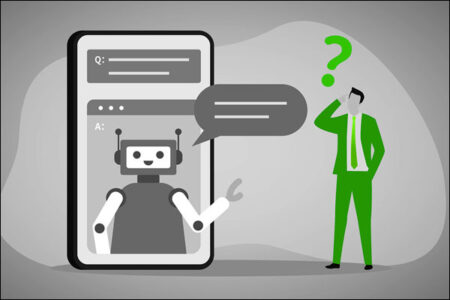
Artificial intelligence technology (AI) made headlines in 1997 when IBM’s Deep Blue beat chess grandmaster champion Gary Kasparov and then again in 2011, when IBM’s Watson competed against and beat prior Jeopardy! television game show champions. The general public woke up to the enormous potential for generative artificial intelligence with the launch of OpenAI’s ChatGPT in November 2022. ChatGPT is a large language model which learns to respond to user requests in plain English or another language.
If you are not familiar with the technology, we encourage you to experiment with any of the following:
- chat.openai.com
- bing.com > Chat
- bard.google.com
AI has been gradually permeating many aspects of our daily lives. For instance, recommendation engines use AI to suggest merchandise, movies, and music based on what service providers know we already like and what we share in common with other users. AI is used for word suggestion, dictation, language translation, GPS navigation, facial recognition, and fraud detection, to name a few applications. It can read and process forms. It can write legal briefs, movie scripts, poetry, and computer code, with varying degrees of success. At its core, AI is just software that uses a lot of computational power to generate results probabilistically, most likely to comply with parameters input by users, having culled through large databases of resource data. The chatbot services described above pull from broad resources across the internet which are then scrubbed for appropriate content. Interestingly, these chatbots don’t always generate factual results. Some mistakes are generated because the technology draws from unreliable data on the internet. But chatbots can also make mistakes based on what to them seems like appropriateresponses, whether or not the responses are accurate. If AI draws from a database that has biases (and arguably there are some biases which span content across the internet), these biases will be reflected in the chatbot’s responses.
Other websites such as Dall-E and Midjourney charge fees, offering to create artwork based on parameters suggested by the user. They draw from images and artwork that are already available on the internet. Such image generation has created copyright infringement issues which have yet to be resolved.
Uses and Abuses
AI is useful because it finds patterns in data. Sometimes these patterns are unconventional or not what humans might detect. That can create opportunities to analyze data differently, but it also creates a risk that the results may transgress social norms, such as inappropriate content for advertisements, suggestions for where ads might be placed, or the use of stereotypes. AI needs oversight. Despite its shortcomings, it’s plain to see how AI can revolutionize much of what we do, at least as a productivity tool, and especially as the technology improves over time.
Autonomous driving is another technology based on AI. Although many people don’t trust AI to drive cars, one of the leading arguments for autonomous driving is that it ultimately promises to be safer—computers don’t get distracted the way people do. Alphabet’s Waymo division initially trained its database for autonomous driving by driving cars around and observing the traffic around them.
It has since augmented this database by having AI create hypothetical situations in a virtual world with intentionally wild drivers, pedestrians, and obstacles, concocting the worst possible scenarios with which an autonomously driven vehicle would ever have to contend. I don’t understand why they don’t just use the streets of Boston as their model, since the city generated the original obstacle of being “Storrowed.”
Companies are making large investments in AI to help them improve customer call centers, teaching, advertising, paralegal case research, cybersecurity, disease diagnosis, drug discovery, and psychological analysis. The technology will displace people from jobs and change industries—that’s what technological advancements do. Technological advancements can raise our quality of life by providing better products and services, or by making them more broadly available at lower cost. The economy builds on such progress, finding new ways to employ displaced workers. That’s not to say we shouldn’t give some consideration to individuals displaced by AI, but society should be optimistic that we can adapt and will be better off for the technology.
Just as any other tool, AI can be helpful, but it can also be misused. Authoritarian governments will use AI to control their citizens. While AI will help computer hackers to hack more effectively, it will also be used to stop them.
One important danger lies in having too much confidence in AI. Well-trained AI might make the right decisions 99.9% of the time, in which case human overseers might decide to flout their oversight responsibilities. Depending on the application, that 0.1% error rate could have very bad consequences.
AI can be used to make “deepfakes”—altered photographs or videos that are very convincing. It can synthesize voices to sound like those of our loved ones. We won’t be able to believe everything we see or hear, and the gullible will be swayed. AI may lead to further political polarization. The next few years will be a period when we learn what limits need to be put on AI, and what needs to change when we can’t put limits on AI.
Investment Implications
We are only beginning to understand AI’s potential. Because it requires a large amount of computational power, the “picks and shovels” providers are clear beneficiaries. These include Nvidia, the dominant provider of AI semiconductors, as well as the cloud computing providers Amazon, Microsoft, and Alphabet. There will be many other beneficiaries. The industry is developing a large service business comprised of data scientists and consultants to help others set up AI systems, define objectives for them, and manage the results.
Beyond the technology providers, companies are looking to use AI to increase sales and cut costs. Since AI requires large databases from which to learn, companies with large databases—larger companies—may have an advantage. Many smaller companies will partner with larger companies to focus on AI development. What specific companies do with AI will depend on their ability to execute—some will find useful applications to exploit and others will miss them.
To the extent that many companies are looking to exploit the same opportunities afforded by AI, the technological innovation may raise the performance standards for whole industries. Competition within an industry might mean the users of AI cede the benefits to their customers, such that customers benefit more than the companies investing in it. Databases may prove to be more proprietary than the AI algorithms that learn from them, and maybe those databases won’t prove to be particularly proprietary in the fullness of time either.
There will be pitfalls along the way. There will be mistakes, maybe even tragic mistakes, as well as regulations and lawsuits. The technology will progress in fits and starts, but we are excited by its prospects. It holds the potential to make our lives better, and it will accelerate technological advancement. With eyes wide open, Woodstock will certainly take AI into account when evaluating individual companies for your portfolios, as AI will change many things.
Adrian G. Davies, President
